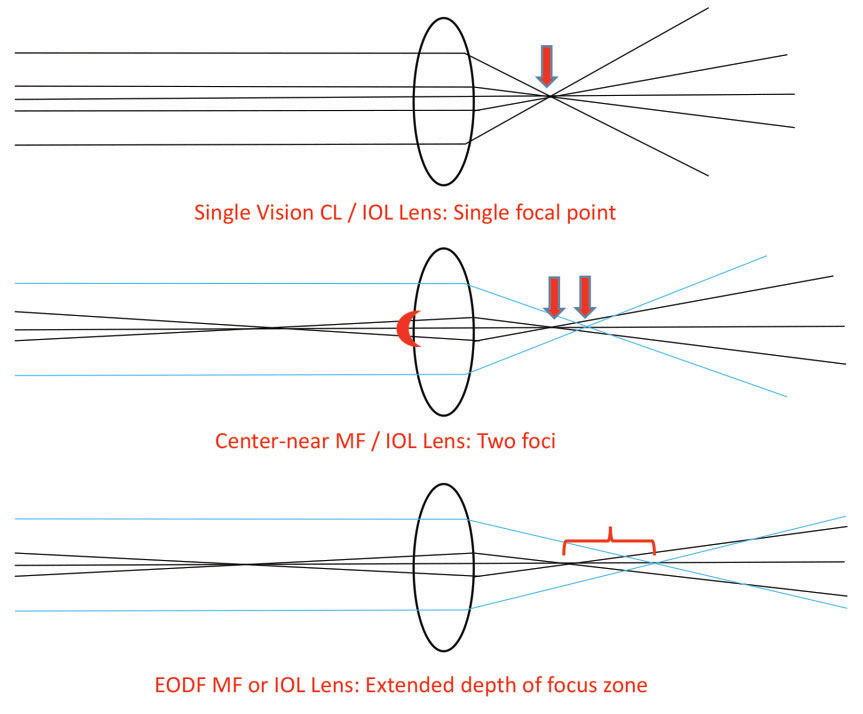 |
| While no IOL achieves perfect vision or satisfaction in all visual environments, newer EDOF options have given many patients a greater range of acceptable outcomes. Photo: Daniel Fuller, OD. Click image to enlarge. |
Counseling cataract patients about choosing an appropriate intraocular lens (IOL) can be challenging with the many different options now available. To provide additional insight into lens choice, researchers in Japan compared +4D diffractive multifocals (a very common choice in that country for those desiring near vision quality) and an extended-depth-of-focus (EDOF) lens. Their findings, published last week in PLoS One, indicated that both lens types work well but have different characteristics in visual performance parameters requiring careful selection.
The study included 1,536 eyes of 768 patients. A total of 663 patients (1,326 eyes) underwent bilateral +4D bifocal implantation with the Tecnis Multifocal ZMB00 and 105 patients (210 eyes) underwent bilateral EDOF implantation with the Tecnis Symfony ZXR00V.
Uncorrected and corrected near visual acuity and near spectacle independence were significantly better in the multifocal group, while the EDOF lenses demonstrated significantly better contrast sensitivity and contrast sensitivity with glare. The EDOF group also performed significantly better in uncorrected intermediate visual acuity, contrast sensitivity with glare and Visual Function Questionnaire-25 (VFQ-25) scores for general vision.
In the VFQ-25, there were no score differences between the two lenses in terms of the driving items, though the researchers pointed out that studies show the best postoperative satisfaction rates are found with monofocals. The EDOF option “could be cautiously indicated” for patients who drive at night, they wrote, though pupil size is a significant influencer of symptoms and hence patient satisfaction.
It can be presumed that the EDOF’s “significantly better results in general vision, one of the items in VFQ-25, were contributed by its significantly higher contrast sensitivity and better intermediate vision,” the researchers continued. “This is possibly because both contrast sensitivity and intermediate vision are essential for the comfortable viewing of computers, televisions and other visual information devices that are indispensable in modern life.”
The researchers wrote that they plan to continue conducting large-scale, one-on-one clinical comparative lens performance studies to use as references for lens selection.
Tabuchi H, Tanabe H, Shirakami T, et al. Comparison of visual performance between bifocal and extended-depth-of-focus intraocular lenses. PLoS One 2023. [Epub July 13, 2023]. |

